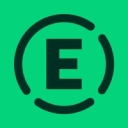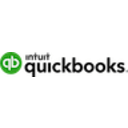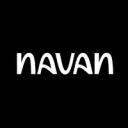Ramp vs Expensify: Which expense management tool is right for your business?
- 01Ramp vs Expensify: overview
- 02What's the difference between Ramp and Expensify?
- 03Ramp pros and cons
- 04Expensify pros and cons
- 05Ramp compared to Expensify
- 06Expensify compared to Ramp
- 07Features comparison
- 08Ramp vs Expensify: Which is the best for your business?
- 09Promotions on Accounting software
- 10Alternatives to Ramp & Expensify
Save up to $1,080 on Expensify
Save up to $1,080 on Expensify
In an ideal business environment, your expense management tools would effortlessly streamline your financial processes and drive operational efficiency. However, when it comes to selecting the right platform for managing expenses, the choice isn't always straightforward. Ramp and Expensify are two of the top contenders, each offering a unique set of features and benefits.
In this article, we'll compare Ramp against Expensify in a detailed analysis, exploring their core functionalities, differences, and pricing structures. By the end, you'll have a clear understanding of which platform aligns better with your company's financial management needs, helping you optimize expense tracking, control, and reporting for your business.
Ramp vs Expensify: overview
Ramp and Expensify are prominent players in the world of financial management and expense control tools, each catering to distinct business needs and user preferences.
Ramp is celebrated for its comprehensive approach to spend management, offering businesses a powerful platform that integrates corporate cards, expense tracking, and automated insights to optimize spending. On the other hand, Expensify, a long-standing favorite in the expense management space, is well-known for its intuitive expense reporting and reimbursement features. It’s particularly favored by businesses that prioritize ease of use and flexibility in handling receipts, approvals, and reimbursements.
Now, let's dive into a detailed Ramp vs. Expensify comparison to help you determine which platform best suits your business’s financial management needs.
What's the difference between Ramp and Expensify?
When comparing Ramp and Expensify, there are several key differences that can significantly impact your choice of expense management platform. These differences primarily revolve around their core functionalities, target audiences, and the overall approach to managing business expenses.
Ramp is designed with a focus on comprehensive spend management, providing businesses with a robust platform that integrates corporate cards, real-time expense tracking, and automated financial insights. Its primary goal is to help companies optimize their spending through automation and analytics. Ramp excels in offering advanced features like automated receipt matching, proactive spend controls, and detailed spend analytics. This makes it particularly appealing to companies that prioritize efficiency, cost control, and scalability in their financial operations. Ramp’s platform is built to handle complex corporate needs, making it ideal for mid-sized to large enterprises looking for a unified solution to manage all aspects of spending.
On the other hand, Expensify is a well-established player in the expense management space, known for its ease of use and strong emphasis on expense reporting and reimbursement processes. Expensify is particularly popular among small to medium-sized businesses and teams that need a straightforward and user-friendly tool for managing expenses. It offers features like receipt scanning, automated expense report generation, and easy integration with accounting software. Expensify's mobile app is highly rated for its simplicity and effectiveness, making it a convenient option for employees on the go.
Another critical difference between Ramp and Expensify is their approach to pricing and user accessibility. Ramp offers a no-fee model, with its services being free for businesses to use, which can be a significant advantage for cost-conscious companies. Expensify, on the other hand, offers both free and paid plans, with the paid plans unlocking more advanced features and higher usage limits.
These distinctions highlight that while Ramp is geared towards businesses looking for a comprehensive, all-in-one spend management solution, Expensify caters to those who prioritize simplicity and ease of use in managing expenses.
Ramp pros and cons
What are the advantages of Ramp?
- Comprehensive spend management: Ramp offers an all-in-one platform that integrates corporate cards, real-time expense tracking, automated receipt matching, and spend analytics, providing a comprehensive solution for managing business expenses.
- No-fee model: Ramp is free to use, which can be highly advantageous for businesses looking to minimize costs while still accessing a powerful expense management tool.
- Automation and efficiency: Ramp automates many financial processes, such as receipt matching and expense categorization, which saves time and reduces manual errors, allowing finance teams to focus on more strategic tasks.
- Advanced spend controls: Ramp provides robust spend controls, enabling businesses to set limits, approve transactions in real-time, and gain better oversight of employee spending, which helps in maintaining budget discipline.
- Scalable solution: Ramp is designed to scale with your business, making it suitable for growing companies that need a solution capable of handling increasingly complex financial needs.
What are the disadvantages of Ramp?
- Limited features for small businesses: Ramp’s extensive features may be overkill for smaller businesses or startups that do not require such comprehensive expense management capabilities.
- Focus on corporate cards: Ramp’s heavy reliance on its corporate card system may not be ideal for companies that prefer to manage expenses through alternative methods or already have established relationships with other card providers.
- Less established in the market: Compared to some older competitors, Ramp is relatively new, which may concern businesses looking for a solution with a long-standing track record.
- Limited international support: Ramp’s services are primarily focused on the U.S. market, which can be a drawback for businesses operating internationally or with significant international transactions.
- Customization limitations: While Ramp offers many automated features, it may lack the level of customization some businesses require for more tailored expense management processes.
Compare Ramp to other tools
Expensify pros and cons
What are the advantages of Expensify?
- User-friendly interface: Expensify is known for its intuitive and easy-to-use interface, making it simple for users to quickly submit, review, and approve expense reports, which is particularly beneficial for teams that require minimal training.
- Robust mobile app: Expensify's mobile app is highly rated and offers features like receipt scanning, expense tracking, and report submission on the go, making it convenient for employees who travel frequently or work remotely.
- Automated expense reporting: Expensify offers powerful automation features, including SmartScan for receipts, automatic expense categorization, and integration with accounting software, which helps streamline the expense reporting process and reduce administrative overhead.
- Flexible plan options: Expensify provides a range of pricing plans, including both free and paid options, allowing businesses of various sizes to choose a plan that best fits their needs and budget.
- Global reach and multi-currency support: Expensify supports multiple currencies and operates in numerous countries, making it a good choice for businesses with international operations or employees who frequently travel abroad.
What are the disadvantages of Expensify?
- Cost for advanced features: While Expensify offers a free plan, many of its more advanced features, such as enhanced policy controls and integrations, are only available on paid plans, which can become costly for larger teams or businesses with complex needs.
- Limited customization: Expensify’s customization options are somewhat limited, which may not meet the needs of businesses requiring highly specific or tailored expense management workflows.
- Learning curve for advanced features: Although the basic functions are user-friendly, some of Expensify's more advanced features can have a steeper learning curve, requiring additional time and effort to master.
- Occasional receipt scanning errors: Expensify's SmartScan feature, while generally effective, can sometimes misread receipts or incorrectly categorize expenses, leading to the need for manual adjustments.
- Integration complexity: Although Expensify integrates with many accounting and ERP systems, setting up these integrations can be complex and may require technical support, particularly for larger or more intricate setups.
Compare Expensify to other tools
Ramp compared to Expensify
Ramp and Expensify both serve as powerful expense management tools, but they cater to different business needs. Ramp focuses on comprehensive spend management with a no-fee model, offering advanced automation, real-time controls, and deep analytics, making it ideal for scaling businesses that require robust financial oversight.
In contrast, Expensify excels in ease of use and flexibility, providing a user-friendly interface and strong mobile capabilities, which are particularly appealing to smaller teams or those needing straightforward expense reporting and reimbursement processes. While Ramp is more suited for cost control and efficiency at scale, Expensify offers simplicity and accessibility.
Is Ramp better than Expensify?
Whether Ramp is better than Expensify depends on your business's specific needs and priorities. Ramp excels in providing a comprehensive spend management solution with advanced automation and real-time financial controls, making it ideal for larger or scaling businesses that need in-depth oversight and cost management. Its no-fee model also adds to its appeal for cost-conscious organizations.
On the other hand, Expensify is better suited for businesses that prioritize ease of use and straightforward expense reporting. Its intuitive interface and mobile-friendly design make it an excellent choice for smaller teams or companies that require simple, efficient expense tracking and reimbursement processes.
What is Ramp best used for?
Ramp is best used for businesses seeking a comprehensive and automated solution to manage and control company spending. It excels in providing real-time expense tracking, corporate card management, and detailed analytics, making it ideal for organizations looking to optimize their financial operations and enforce strict budget controls.
Ramp's platform is particularly beneficial for scaling companies that need to streamline expense processes, reduce manual oversight, and gain deeper insights into spending patterns. With its focus on automation and efficiency, Ramp is well-suited for businesses that prioritize cost management and want to maximize operational efficiency.
Can Ramp replace Expensify?
Ramp can potentially replace Expensify for businesses that prioritize comprehensive spend management and automation over traditional expense reporting. Ramp offers a more integrated approach by combining corporate cards with real-time expense tracking and analytics, making it a strong alternative for companies seeking to streamline financial operations.
However, for businesses that rely heavily on detailed expense reporting, reimbursement processes, or prefer a simpler, more user-friendly interface, Expensify might still be the better choice. While Ramp can cover many of the same functions, the decision to replace Expensify depends on the specific needs and priorities of the organization.
Is Ramp cheaper than Expensify?
Ramp is generally cheaper than Expensify because it operates on a no-fee model, offering its platform without charging businesses for using its core features. This makes Ramp a cost-effective option for companies looking to manage expenses without incurring additional software costs.
In contrast, Expensify offers both free and paid plans, with more advanced features requiring a subscription, which can add up depending on the size of the team and the level of functionality needed. For businesses focused on minimizing expenses while still accessing robust spend management tools, Ramp’s pricing presents a more economical choice compared to Expensify.
Is there a better Accounting software than Ramp?
The search for a "better" software than Ramp is subjective and depends on your specific business needs and priorities.
Ramp excels as a comprehensive spend management platform, but there are other alternatives to Ramp worth considering. For example, Brex offers a similar suite of corporate cards and expense management tools, with a focus on startup-friendly features and rewards. Divvy provides robust budgeting tools and spend tracking, making it a strong choice for companies needing granular financial control. Expensify, while different in approach, remains a favorite for businesses that prioritize straightforward expense reporting and reimbursements.
To determine the best solution, assess your organization's financial management requirements, existing tools, and desired user experience, considering factors like automation, cost, and scalability.
Expensify compared to Ramp
Expensify and Ramp serve different financial management needs, with Expensify focusing on ease of use and straightforward expense reporting, while Ramp offers a more comprehensive, automated approach to spend management. Expensify is ideal for businesses that need simple expense tracking, receipt scanning, and reimbursement workflows, making it popular among small to medium-sized companies.
In contrast, Ramp is designed for businesses seeking real-time control over spending, with features like corporate cards, automated expense categorization, and advanced analytics. While Ramp provides a more integrated solution for managing expenses at scale, Expensify remains a strong choice for those prioritizing simplicity and user-friendly tools.
Is Expensify better than Ramp?
Whether Expensify is better than Ramp depends on what your business values most in an expense management tool. Expensify excels in providing a straightforward, user-friendly platform that simplifies expense tracking, receipt scanning, and reimbursement processes, making it an excellent choice for smaller to medium-sized businesses that need a reliable and easy-to-use solution. Its focus on simplicity and efficiency makes it ideal for teams looking for quick implementation without the need for complex setups.
However, if your business requires a more integrated and automated approach to manage and control spending on a larger scale, Ramp might be the more suitable option.
What is Expensify best used for?
Expensify is best used for simplifying the process of expense reporting and reimbursement, making it particularly valuable for small to medium-sized businesses and teams. It excels in providing an intuitive platform where users can easily scan receipts, track expenses, and generate reports with minimal effort.
Expensify is ideal for companies that need a straightforward, user-friendly solution to manage employee expenses, automate approval workflows, and ensure accurate reimbursements. Its mobile app is also a strong feature, enabling employees to manage their expenses on the go, making it a go-to tool for businesses with frequent travelers or remote workers.
Can Expensify replace Ramp?
Expensify can replace Ramp for businesses that primarily need a straightforward solution for expense reporting and reimbursement, rather than a comprehensive spend management system. While Expensify excels in simplifying the process of tracking expenses, scanning receipts, and managing reimbursements, it may lack the advanced automation, real-time spend controls, and integrated corporate card features that Ramp offers.
If a business’s needs are focused on basic expense management and ease of use, Expensify can be an effective alternative. However, for companies seeking deeper financial oversight and control across all spending activities, Ramp might still be the more suitable choice.
Is Expensify cheaper than Ramp?
Expensify’s pricing is generally not cheaper than Ramp because Expensify offers both free and paid plans, with advanced features requiring a subscription, which can increase costs depending on the number of users and features needed. In contrast, Ramp operates on a no-fee model, providing its core services for free, making it a more cost-effective solution for businesses looking to manage expenses without additional software costs.
While Expensify may be more affordable for very small teams using the basic free plan, as your needs grow and you require more features, Ramp typically offers a more economical option with broader capabilities.
Is there a better Accounting software than Expensify?
Determining if there's a "better" software than Expensify depends on your specific business needs and priorities. Expensify is well-regarded for its ease of use, particularly in expense reporting and reimbursements, making it a popular choice for small to medium-sized businesses.
However, alternatives to Expensify like Ramp, Brex, Navan, and Divvy each offer distinct advantages. Ramp excels in comprehensive spend management with real-time controls and automation, Brex is tailored for startups with rewards and flexible credit options, and Divvy provides detailed budgeting tools. Choosing the "better" software depends on factors like your company's financial management needs, desired features, scalability, and overall user experience.
50% off annual subscriptions for 6 months on Expensify
Get 50% off annual subscriptions for 6 months on Expensify and up to $1,080 savings with Secret.
Features comparison
Ramp Excels Over Expensify in User-Friendly Interface and Ease of Use
In terms of user-friendly interfaces and ease of use, Ramp clearly stands out as the more intuitive option. While both Ramp and Expensify prioritize user experience, Ramp's clean and streamlined interface simplifies daily tasks, making it ideal for users of all technical backgrounds. For example, Ramp's dashboard is designed with a clear, organized layout that allows users to manage expenses, track spending, and access reports with minimal effort.
In contrast, Expensify, while feature-rich, presents a more complex structure that can require a steeper learning curve, particularly for non-tech-savvy users who may find the interface less intuitive and harder to navigate.
Expensify Leads Ramp in Integration Possibilities with Extensive Third-Party Connectivity
When it comes to integration possibilities, both Ramp and Expensify provide strong connectivity options with third-party applications, but Expensify pulls ahead with its extensive list of integration partnerships. Expensify's robust compatibility with a wide array of platforms, such as QuickBooks, Xero, NetSuite, and Salesforce, enables businesses to create a seamless and unified ecosystem that significantly enhances productivity and efficiency. For instance, a company using QuickBooks for accounting can easily sync expense data from Expensify, reducing manual entry and errors.
Conversely, while Ramp offers integrations with popular accounting tools like Sage and QuickBooks, its range of available integrations is not as extensive as Expensify's, which may limit its flexibility for businesses with more diverse software needs.
Expensify Outshines Ramp with Superior Credit Card Integration and Real-Time Expense Tracking
Expensify's credit card integration provides a seamless and automated solution for real-time expense tracking, offering a significant advantage over Ramp's workflows. When a transaction is made on a linked card in Expensify, it is automatically imported, categorized, and added to an expense report without any manual intervention.
For example, if an employee purchases a business lunch using a company card, the transaction instantly appears in Expensify, complete with categorized details, ready for approval. This real-time tracking streamlines expense management and eliminates the need for manual data entry, which can still be necessary in Ramp’s system, where the focus is more on automated data entry and report generation rather than instant tracking and categorization. Expensify's approach, therefore, offers businesses a more efficient way to manage expenses as they happen.
Ramp Excels Over Expensify with Superior Customization Options for Tailored User Experience
Ramp allows its users to tailor the software extensively to meet their individual business needs, offering customizable dashboards, reports, and data views. For example, users can create personalized dashboards that highlight key financial metrics relevant to their roles, adjust report formats to match internal workflows, and filter data views to focus on specific spending categories or time periods. This level of customization empowers businesses to extract the most relevant insights from their data and streamline their financial processes.
In contrast, while Expensify provides some customization options, such as setting up custom rules for policy compliance checks, it lacks the same depth of personalization. Expensify's customization is more limited to predefined templates and rules, which may not offer the flexibility needed for businesses with complex or unique reporting requirements.
Expensify's Advanced Receipt Scanning Outpaces Ramp's Automation Features
Expensify's receipt scanning capability leverages OCR (Optical Character Recognition) technology to extract transaction details from receipts almost instantly. Users simply take a photo of their receipt, and Expensify automatically categorizes the expense, adds it to the corresponding report, and even attaches the image for easy reference. For example, after a business lunch, an employee can quickly snap a picture of the receipt, and within seconds, the details—such as the vendor, date, and amount—are accurately captured and logged without any manual input.
This feature streamlines the expense reporting process significantly, offering a unique advantage over Ramp, which, despite its robust automation capabilities, lacks this specific functionality. Ramp's automation primarily focuses on expense tracking and report generation, but it does not include the real-time receipt scanning and categorization that makes Expensify particularly user-friendly for employees who frequently incur expenses.
Both Ramp and Expensify Offer Robust Automated Report Generation to Streamline Financial Processes
Both Ramp and Expensify excel in providing automated report generation, significantly reducing the time and effort required to produce detailed financial reports. Ramp automates repetitive tasks such as report generation by pulling data from various sources, categorizing expenses, and creating reports that reflect spending patterns and budget adherence. For instance, a finance team can set up Ramp to automatically generate a weekly spending report, highlighting key areas of expenditure without manual intervention. Expensify goes a step further by not only automating report generation but also automating the entire process of expense creation, categorization, and assembly into comprehensive reports. This means users can snap a receipt, and Expensify will categorize the expense, attach it to a report, and even apply company policy checks automatically.
Both tools, therefore, are equipped to save users significant time and effort, but Expensify’s additional layers of automation in the creation and categorization process provide an extra level of convenience for businesses that require detailed and policy-compliant reports.
Expensify Outpaces Ramp with Superior Multi-Currency Support for International Travelers
Expensify's multi-currency support gives it a significant advantage over Ramp, particularly for businesses with international operations or frequent global travelers. Expensify automatically converts foreign transactions into the user's home currency, simplifying the expense reporting process for trips abroad and ensuring accurate financial records without the hassle of manual conversions. For example, an employee traveling from the U.S. to Europe can make purchases in euros, and Expensify will seamlessly convert those expenses into dollars, categorizing them accordingly in the expense report. This feature is especially beneficial for companies with a global workforce or those dealing with multiple currencies regularly, as it reduces the potential for errors and streamlines the entire expense management process.
Ramp, while offering robust financial management tools, lacks this specific functionality, making Expensify the preferred choice for businesses that need reliable and automated currency conversion during international transactions.
Subscribe to our newsletters.
No FOMO here. Stay up-to-date on all the latest deals and news with our monthly newsletter straight to your inbox like 126,000+ entrepreneurs (+ Get 10% off on on our Premium Membership!)
Ramp vs Expensify: Which is the best for your business?
Ramp is the best tool for you if:
- You need a comprehensive spend management solution that integrates corporate cards, real-time expense tracking, and automated financial insights to optimize and control your company's spending efficiently.
- Your business values cost-effectiveness, as Ramp offers its core services for free, providing powerful expense management tools without the need for expensive software subscriptions.
- You want advanced automation features, such as automated receipt matching and proactive spend controls, to reduce manual work and improve accuracy in your financial processes.
- Scalability is crucial, as Ramp is designed to grow with your business, making it ideal for companies planning to expand their financial operations.
- Your team requires a user-friendly platform that provides a clean, intuitive interface, making it easy for users of all technical abilities to navigate and manage expenses effectively.
Expensify is the best tool for you if:
- You need a straightforward and user-friendly expense management tool that simplifies the process of tracking, categorizing, and reporting expenses, especially for small to medium-sized businesses.
- Your business requires robust receipt scanning capabilities, where users can quickly snap photos of receipts and have expenses automatically categorized and added to reports using OCR technology.
- You prioritize flexibility in expense reporting and reimbursement processes, with the ability to customize policies and automate approval workflows to suit your specific business needs.
- Your team frequently travels internationally, and you need reliable multi-currency support to automatically convert foreign transactions into the home currency, simplifying expense reporting.
- You value a mobile-friendly solution, as Expensify’s highly rated mobile app allows employees to manage their expenses on the go, ensuring timely and accurate expense reporting from anywhere.
Alternatives to Ramp & Expensify
Promotions on Accounting software
Start saving on the best SaaS with Secret.
Secret has already helped tens of thousands of startups save millions on the best SaaS like Ramp, Expensify & many more. Join Secret now to buy software the smart way.










